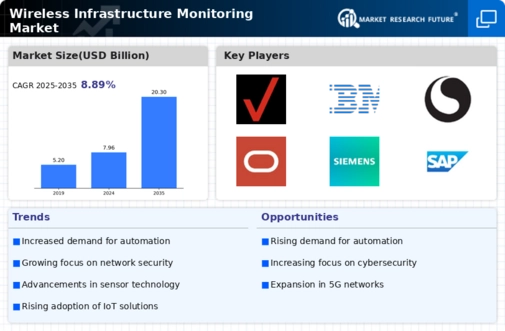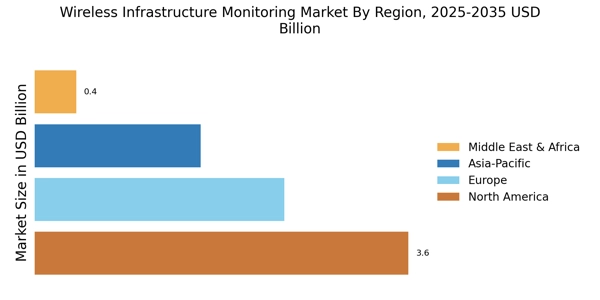The Global Wireless Infrastructure Monitoring Market is characterized by rapidly evolving technologies and increasing demand for efficient and reliable infrastructure management solutions. As organizations strive to maintain optimal performance and minimize downtime, solutions for wireless infrastructure monitoring are becoming indispensable.
Companies operating in this market face fierce competition as they innovate and enhance their offerings to meet the diverse needs of diverse sectors, including telecommunications, energy, and transportation.
The market landscape is shaped by the continuous development of advanced monitoring solutions, integration of artificial intelligence, and emphasis on real-time data access, which are essential for facilitating informed decision-making and predictive maintenance. Understanding the competitive dynamics among key players is crucial for stakeholders aiming to navigate this market effectively.
Verizon plays a significant role in the Global Wireless Infrastructure Monitoring Market, leveraging its extensive telecommunications infrastructure to deliver robust monitoring solutions. The company has established a solid presence by integrating advanced technologies that enhance its service offerings.
Verizon's strengths lie in its vast network capabilities, which allow for comprehensive monitoring of wireless infrastructures across various geographic locations. Its commitment to innovation ensures that Verizon continuously improves its monitoring services, utilizing real-time data analysis and advanced reporting features to provide actionable insights.
This not only helps clients optimize their operations but also supports proactive maintenance strategies, thereby reducing costs and improving overall efficiency. With a strong emphasis on customer support and a proactive service model, Verizon differentiates itself in the competitive landscape.
IBM also holds a prominent position in the Global Wireless Infrastructure Monitoring Market with its focus on harnessing advanced analytics and cloud-based solutions. The company's strengths are rooted in its expertise in artificial intelligence, machine learning, and data analytics, which are pivotal in driving effective monitoring strategies.
IBM's solutions are designed to provide comprehensive visibility and control over wireless infrastructures, enabling organizations to quickly identify and address potential issues. Known for its strong research and development capabilities, IBM is continuously innovating to deliver next-generation solutions that can adapt to the dynamic nature of the market.
The integration of IBM's technology into existing systems allows seamless communication and enhances operational efficiency. Furthermore, IBM’s partnerships and collaborations with other industry leaders enable it to extend its reach and influence within the wireless infrastructure monitoring arena, further solidifying its competitive advantage.

















Leave a Comment